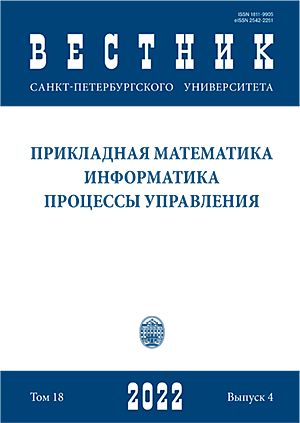Эпидемическая модель малярии без вакцинации и при ее наличии. Ч. 2. Модель малярии с вакцинацией
DOI:
https://doi.org/10.21638/11701/spbu10.2022.410Аннотация
Предложена математическая модель эпидемии малярии с вакцинацией в популяции людей (хозяев), где передача заболевания осуществляется комаром (переносчиком). Модель распространения малярии, в которой учитывается уровень вакцинации популяции, задается системой обыкновенных дифференциальных уравнений. Популяция хозяина в любой момент времени делится на четыре подгруппы: восприимчивые, укушенные, инфицированные и восстановленные. Достаточные условия устойчивости равновесия без болезней и эндемического равновесия получены с использованием теории функций Ляпунова. Проведено численное моделирование для изучения влияния параметров модели на распространение заболевания, включая уровень вакцинации популяции.
Ключевые слова:
эпидемическая модель, малярия, вакцинация, SEIR модель, эндемическое равновесие
Скачивания
Библиографические ссылки
Загрузки
Опубликован
Как цитировать
Выпуск
Раздел
Лицензия
Статьи журнала «Вестник Санкт-Петербургского университета. Прикладная математика. Информатика. Процессы управления» находятся в открытом доступе и распространяются в соответствии с условиями Лицензионного Договора с Санкт-Петербургским государственным университетом, который бесплатно предоставляет авторам неограниченное распространение и самостоятельное архивирование.





